
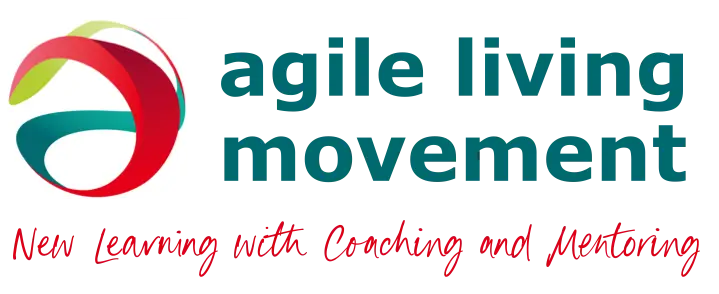
Are you urgently looking for experts in your field? Would you like to offer an internal specialist career path and keep your experts in the company?
Would you like to see more progress in your agile or digital transformation? There are individual cells in your company that are already working enthusiastically on change, but how can this experience be transferred to other areas of the company? Would you like to overcome the resistance that often accompanies a transformation?
Are you looking for ways to distribute the expert knowledge of individuals to many employees? Do you want your experts to contribute their knowledge to the company in the long term? Do you need a community that is self-organized and continuously develops and shares its knowledge?
We introduce….
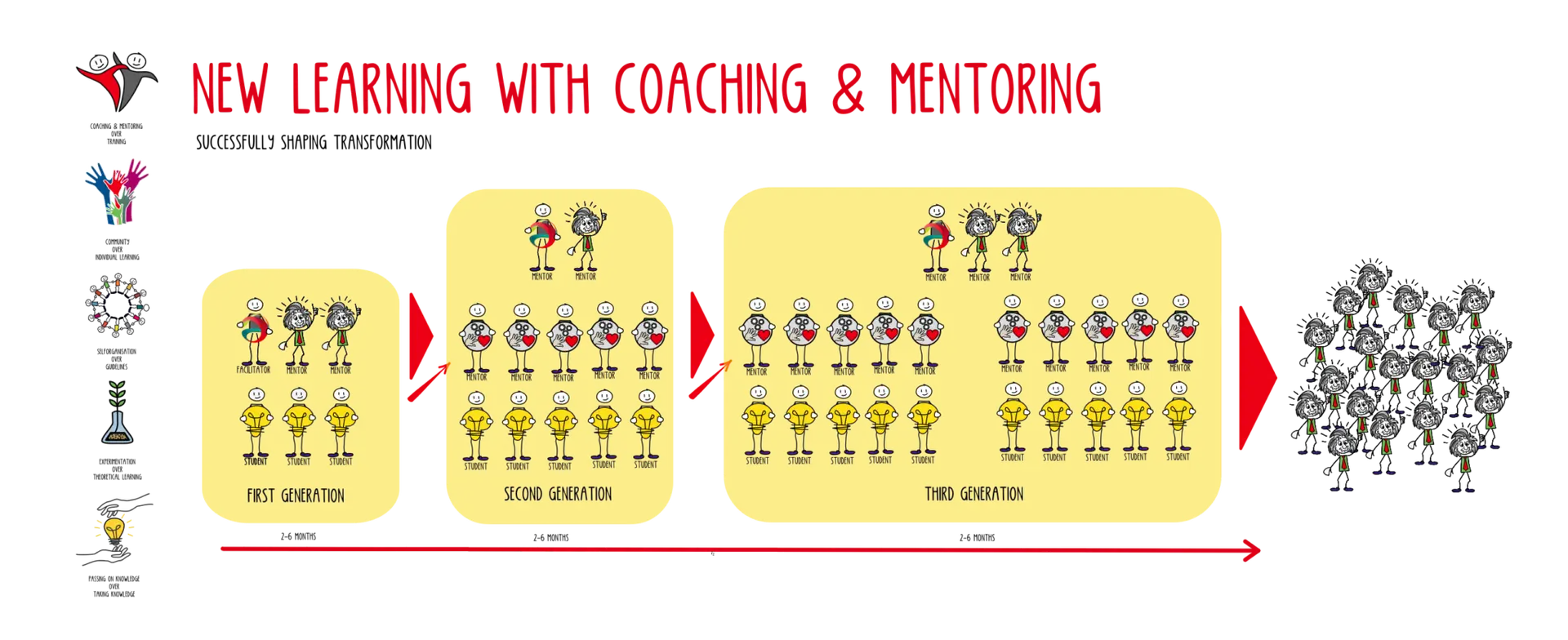
Train internally interested employees to become experts who can act as multipliers for their ideas within the company and contribute to the desired change.
We support you in ensuring that you do not have to permanently fill the gaps in your workforce with external employees and work with you to set up a self-organised Agile Living Movement programme with which you will have a closely networked community in one to two years that can drive the programme forward internally.
Agile Living Movement is the framework for collaborative learning with coaching and mentoring and is based on the Movement Framework.
We currently offer programmes for Scrum Masters, Product Owners, leaders, Scrum teams and agile organisations, which are subsequently accredited according to the guidelines of the Agile Coaches Alliance.
In addition, we also offer movements for Nonviolent Communication, feedback and psychological safety.
Together with your experts, we can develop and compile the specific learning content that your organisation needs and wants to anchor sustainably. We then either introduce the Agile Living Movement to you and accompany you until your experts can take over our tasks, or train individuals to become Movement Facilitators so that you can set up a Movement on your own.

The power of the Movements lies in the combination of group work, mentoring and accompanied transfer into working life.
We value training very highly and enjoy using it successfully in certain situations. At the same time, the learning transfer rate is very low. On-the-job mentoring supports participants in putting what they have learnt to the test in their everyday working life and applying it in their context. Reflection with the mentors makes it easier to deal with challenges and promotes the personal development of the participants.
We value learning in every form. In the work context, organisations and teams rely on collaborative work. With a Movement, participants develop skills and practices that are helpful for group learning.
Each Movement has a clear structure and predefined learning content. All of this requires discipline. At the same time, participants are encouraged to develop their own way of working together. These skills, making joint decisions, dealing with group dynamics, are practised and developed together.
Of course, Movement also offers theoretical background and new knowledge is built up. However, the transfer of learning is important. For this reason, we work with experiments right from the start, which help to establish an effective transfer of learning.
When we learn, we do it first and foremost for ourselves. Even though many organisations have recognised that training is fundamentally important, this also means a high investment for organisations. A movement encourages group learning so that knowledge is shared among several people from the outset. If follow-up movements are organised and the participants develop into mentors, there is a nice balance of give and take.
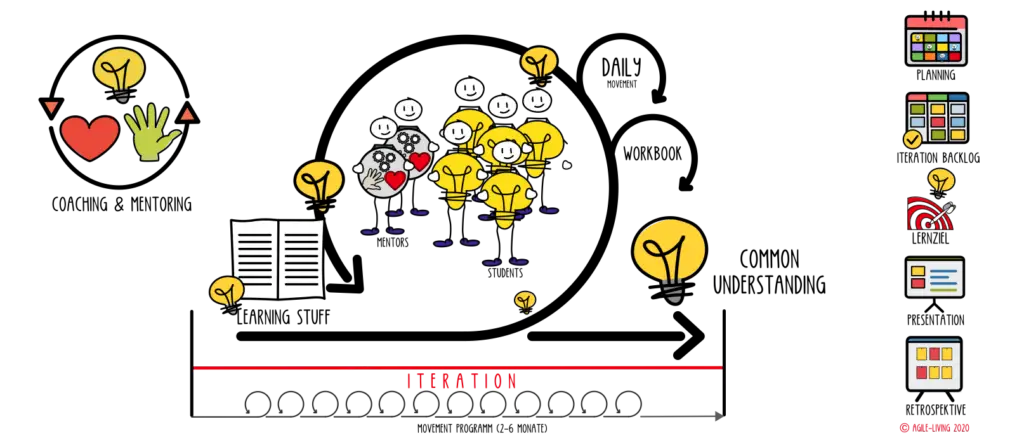
The Coaching & Mentoring programme is based on the Movement framework.
The programmes that are built and delivered using this framework last between 2 and 6 months, depending on the amount of learning content, and are delivered in a series of two-week iterations.
We provide the learning content for all Scrum accreditations and can help create your specific learning content so that you can build your required knowledge internally.
Participants work through the learning content in a self-organised and work-based manner in small groups and receive both 1:1 mentoring and support as a learning group.
After successfully completing the programme, participants can develop into mentors for subsequent programmes. This means that more programmes can be run at the same time and the knowledge is firmly anchored in the company and can be passed on internally.

Junior employees and career changers are suitable candidates for Agile Living Movement. The important prerequisite is that the participants work in a team from the outset in which the expert knowledge is applied. This allows them to immediately put what they have learnt to the test in their day-to-day work and reflect on and further develop it in the Agile Living Movement community.
Experienced employees and experts in the field can act as mentors for Agile Living Movement. Employees who have completed the programme as participants can act as mentors for subsequent generations.S
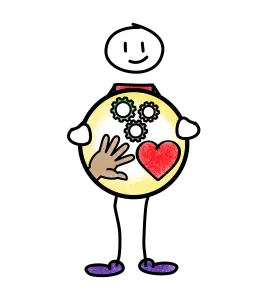
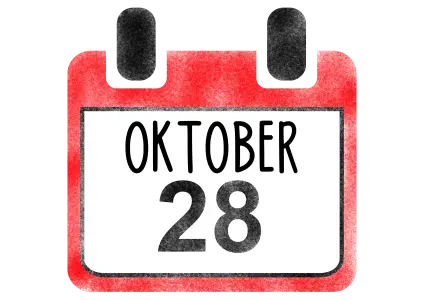
The cycle for a generation in the Agile Living Movement programme lasts 3-6 months as a participant and the same amount of time as a mentor, depending on the learning content. This creates a cycle of learning, deepening and passing on know-how in the programme.
After 2-3 generations, the participants can continue the programme internally and independently of us.
In times of rapid change, a permanent learning culture is not only necessary for innovation – continuous learning and development is also required to adapt to the changing market.
With Agile Living Movement, a learning culture is developed and brought into the organisation. Through the promotion and development of multipliers, knowledge is carried into the company and anchored in various places.

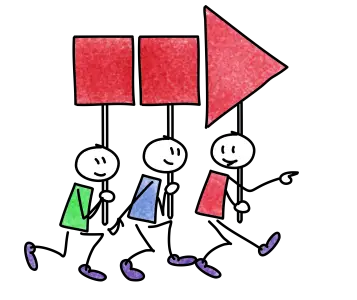
Agile Living Movement thrives on the interaction between the participants and their mentors. All participants can become mentors for new participants in the following generations.
As a mentor, the focus is on knowledge transfer, coaching and lateral leadership. Self-management is an important component of successful collaboration. Mutual, active leadership as required is a helpful skill.
The mentoring journey in the Agile Living Movement provides a safe space for reflection, feedback and learning – as a basis for effective leadership in the work context.
External and freelance employees are more expensive than internal employees. They can also only stay with the company for a limited period of time. A high onboarding and offboarding effort ties up time and money.
Agile Living Movement builds up internal expertise. The programme makes it possible to focus more on juniors in recruiting because they can be specifically developed in the programme.
With our offer, training costs can be saved because the experts and mentors pass on their specialised knowledge.
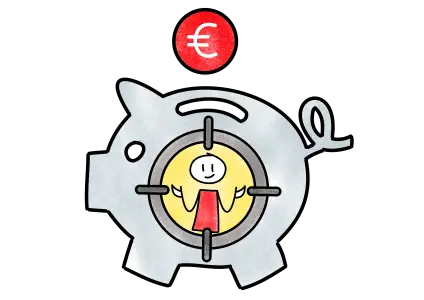

Agile Living Movement develops a strong learning culture and community for future collaboration.
Each participant can be developed as a mentor in the next cycle after completing the programme. This represents an effective step from absorbing knowledge to passing it on. Knowledge transfer is an important prerequisite for learning and the development of products that constant change makes necessary and possible.
is an important pillar for learning and the further development of technology and knowledge in the company.
Agile Living Movement lays the foundation for a future community of practice because the participants organise the learning journey with their student peers themselves. If a generation is put together from different areas of the company, this leads to good networking across departmental boundaries.
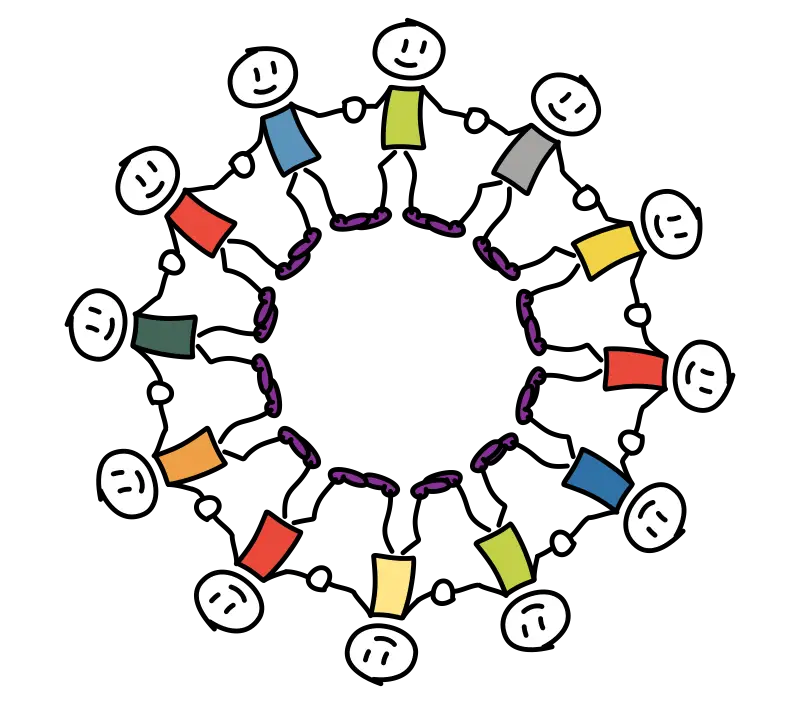

There is currently an acute shortage of experts in many specialist areas. Many companies are turning to freelancers and external experts to cover their needs. This is expensive and often does not lead to the desired result. The experts tend to be deployed in production – when they leave the company, their expertise also leaves the company.
With Agile Living Movement, we want to anchor the expertise of experts (internal and external) in the company and utilise it on a permanent basis.
In many companies, developers are recruited and then assigned to a vacant position in a team. Often it is not possible to check how it fits together and a lot of unrest can arise, which can affect the productivity of the team.
Agile Living Movement can serve as a first point of contact for newcomers. Here, employees can familiarise themselves with the company’s way of working and domain language. During the programme, newcomers can come into contact with the various teams and find out where they can make the best impact.


External employees are helpful for solving short-term problems. In the long term, however, they are usually too expensive. In addition, external employees can only work for the same company for a limited period of time due to legislation.
This always means a loss of expertise and the use of time and money for new onboarding.
At Agile Living Movement, we (also) utilise the knowledge of external experts in order to bring their knowledge into the company. It is important to us that the focus is not on these experts working alone – instead, we organise the work situations in such a way that the knowledge flows into the company in the best possible way. Pair and mob programming, shadowing, workshops and training sessions help here. The focus is on helping people to help themselves instead of letting the experts solve the problems.
copyright agile-living ©2021
+49 179 5122527